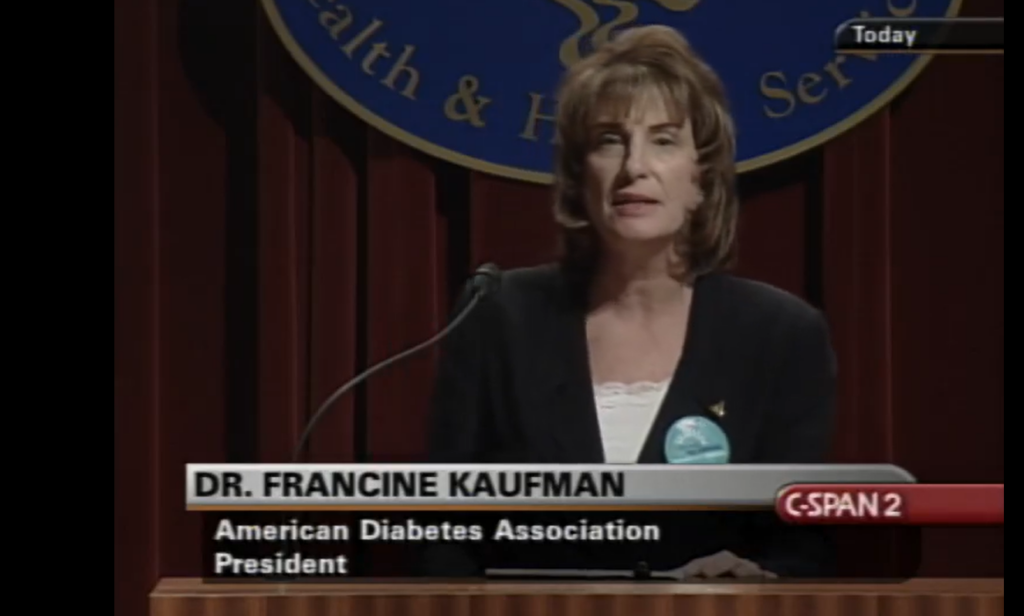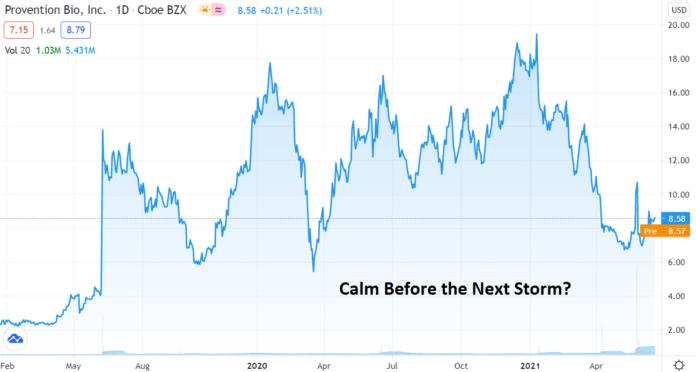Teplizumab: Can We Delay the Onset of Type 1?
Last updated: 6/7/21
By Dr. Francine Kaufman
Provention Bio’s new injectable drug was recommended by an FDA committee for approval on May 25, 2021. Studies show that teplizumab can delay, for people at risk for type 1, the onset of the condition for two years or more. Learn what happened at the FDA meeting and what might come next.
Rarely does one get to witness the potential for an entirely new therapeutic or preventive drug to come onto the medical horizon. But that is the threshold we have now reached with the possible approval by the U.S. Federal Drug Administration (FDA) of the first drug that attempts to delay the onset of type 1 diabetes (T1D) – teplizumab.
Some questions remain to be seen: whether there is enough data, whether the data is sufficiently compelling, and whether the risk-to-benefit ratio is favorable enough for the FDA to grant teplizumab’s approval. To address these issues, the FDA convened an Endocrinologic and Metabolic Drugs Advisory Committee Meeting (EMDAC) on May 27, 2021.
What is teplizumab?
Teplizumab is a drug (specifically, an anti-CD3 monoclonal antibody) that binds to cells in the immune system called T-cells (these are the body’s infection-fighting cells). Scientists hope that teplizumab will change the types of T-cells in a person’s body so that autoimmunity – or the destruction of body tissue by ones’ own immune system – is decreased. This would reduce the self-destruction of the insulin-producing cells of the pancreas, called beta-cells, that leads to T1D.
What’s next for teplizumab?
The FDA now has to determine if teplizumab can truly help beta-cells survive. This will show the “effectiveness” or “efficacy” of the drug. The FDA also must determine if teplizumab is safe or if there are too many side effects (the “safety” of the drug).
How did we get here?
The drug manufacturer, Provention Bio Inc., applied to the FDA to approve teplizumab as a way to delay the onset of T1D in high-risk individuals. Even before Provention Bio’s TN-10 clinical trial, other studies were conducted with different forms of this type of medication.
Macrogenics (the previous company to own teplizumab) evaluated whether anti-CD3 could be used at the onset of T1D to preserve some of the insulin producing beta-cells. If people with T1D could still make some insulin on their own, in addition to the insulin they needed to take, diabetes management could be made easier, with less hyperglycemia, lower A1C levels, and less risk of diabetes complications. However, the data did not show sufficiently strong outcomes needed for the FDA to approve anti-CD3 for new-onset diabetes. Perhaps it was simply too late in the diabetes process for this type of drug to make a significant difference. So, the focus turned to prevention – and to “delaying” the onset of T1D.
The TN-10 trial compared teplizumab to a placebo in 79 people with type 1 diabetes ranging in age from eight to 49 years. Teplizumab was given by intravenous infusion (IV) for 30 minutes over 14 days. To assure that study participants and research staff did not know who received teplizumab or the placebo, the placebo was given through IV in the same manner.
After two years, 43% of those given teplizumab developed clinical diabetes compared to 72% of participants in the placebo group. The health outcomes between the treatment and placebo groups were significant and in favor of teplizumab, but the number of people in the trial was small (only 79 people). Similarly, TN-10 showed teplizumab to be safe, but it is hard to be sure about both the short- and long-term safety profile of the drug. Provention Bio is asking the FDA to allow teplizumab to be approved for children and adults who are at risk for (but do not yet have) diabetes. Because of this, understanding the safety and effectiveness of the drug is even more important.
What happened at the FDA meeting?
The EMDAC panel was asked to analyze the data and provide a recommendation on teplizumab, but the final decision, as always, rests with FDA. The panel was composed of 17 highly regarded endocrinologists, rheumatologists, cardiologists, biostatisticians and mathematical statisticians, a consumer representative, and a patient representative. All panelists agreed that teplizumab showed benefit to the participants of the TN-10 study by delaying the onset of diabetes by two years. However, there was concern about some of the data from prior studies on teplizumab which did not reveal a significant effect on glucose management in people with new-onset T1D.
The panel focused on safety concerns, mainly in terms of long-term risks. The data from TN-10 and the five previous studies in those with newly diagnosed T1D showed higher rates of diabetic ketoacidosis, viral infections, and cytokine release syndrome (which causes flu-like symptoms) in the anti-CD3 groups than in the placebo groups. There were also three total deaths in the treatment groups and none in the placebo groups. The EMDAC panel agreed that long-term surveillance studies would be required to better understand how safe this treatment is, if approved by the FDA.
Although five previous studies were submitted as evidence about teplizumab, the manufacturing and the rate at which the drug was cleared from the blood stream are not the same as what has been seen with the teplizumab under FDA review. This brings up the concern that the prior studies don’t truly support the present submission. The panel also agreed that if the FDA approved teplizumab, it could only be indicated for use in people with the same characteristics as those evaluated in TN-10 – people over the age of eight, with a family history of T1D, and similar glucose profiles. Since about 80% of people who develop T1D have no affected relative, the target population for the drug would be smaller than the actual number of people it could help, at least to begin with, though this could be reconsidered once more safety data is available.
Of the 17 EMDAC panel members, 10 voted in favor and seven voted against recommending FDA approval of teplizumab for the delay of T1D.
What does this mean in the diabetes community?
During the Open Public Hearing that helped influence the EMDAC’s decision, diabetes community leaders and organizations provided input, shared perspectives, and advocated for approval. The experts talked compellingly about the benefit of a two-year delay in diabetes diagnosis and what that would mean with regards to health. Several endocrinologists described the burdens of managing diabetes despite improvements in medications and technology, and the unmet needs that are still present in type 1 treatment regimens. The speakers included:
- JDRF CEO Dr. Aaron Kowalski
- Dr. Mark Atkinson (University of Florida)
- Dr. Louis Phillipson (University of Chicago)
- Dr. Jeff Hitchcock (Children with Diabetes)
- Dr. Jeremy Pettus (University of California San Diego)
- Dr. Jennifer Sherr (Yale University)
- Dr. Korey Hood (Stanford University)
- diaTribe founder Kelly Close (Close Concerns) and Jackie Tait (dQ&A), who detailed input from a survey by dQ&A on 1,078 people with T1D.
These speakers were supported by 187 letters posted to the FDA, as well as a dQ&A survey of 1,078 adults with T1D. Survey participants reflected upon how a two-year delay before needing to start insulin would have affected their life with diabetes.
Now it is in the hands of the FDA. If approved, teplizumab would become the first disease-modifying, preventive drug for T1D, and it could have the potential to change the paradigm of how the condition is managed. Stay tuned as we aim to keep you updated on this drug’s journey through the FDA approval process.
Dr. Francine Kaufman on Google
National Diabetes Education Program (2002)













